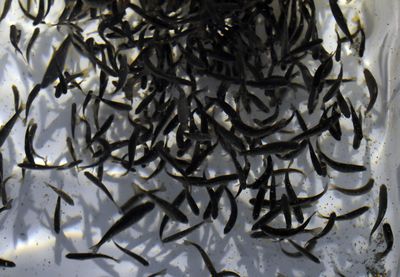Colville Tribes pay to keep N.E. Washington hatchery open
$108,000 agreement covers next 12 months

The Colville Confederated Tribes will pay $108,000 to keep a state hatchery in northeast Washington open for the next 12 months.
The Colville Fish Hatchery raises rainbow trout and kokanee salmon for recreational fishing at 72 lakes and streams in Ferry, Stevens and Pend Oreille counties. The hatchery was targeted for closure as part of budget cuts at the Washington Department of Fish and Wildlife.
Under an agreement announced Wednesday, the Colville tribes will pay for fish-rearing operations and staffing at the hatchery through June 2010.
“We are very appreciative of this support from the Colville Confederated Tribes to maintain fisheries in this part of the state for all anglers,” John Andrews, WDFW’s eastern regional director, said in a statement.
Keeping the hatchery open benefits both the state and the members of the Colville tribes, said Michael Finley, vice chairman of the tribes’ business council.
“If it had to shut down, it would have impacted us as well,” he said
Each year, the hatchery raises about 409,000 trout and kokanee fry, some of which grow up to be caught by the tribes’ members, Finley said. The hatchery also functions as an incubation and early-rearing facility for native westslope cutthroat trout and native redband trout.
As part of the agreement, the tribes will raise kokanee fry at the hatchery for release into the San Poil River, which flows through part of the Colville Reservation. Genetic work indicates that the San Poil’s kokanee runs are close to native strains that originated in the river, said Joe Peone, the tribes’ fish and wildlife director.
The tribes want to augment the San Poil runs with judicious releases of genetically similar hatchery fish. Peone said he’d been searching for hatchery space to raise the fry.
“The tribes needed something like this, and the state budget shortfall provided an opportunity,” Peone said.